
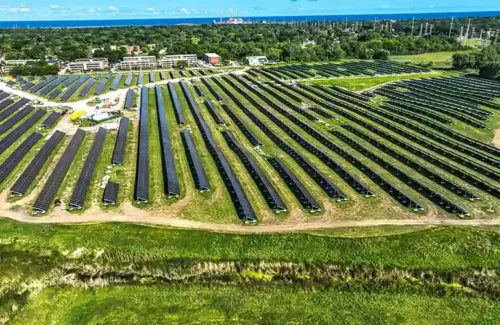
CleanCapital announced the completion of two brownfield solar development projects - the Yeoman solar project in Waukegan, Illinois and the Little Elk solar project in Elkton, Maryland. The Yeoman Solar Project, expected to be put into use by the end of 2025, is a 9.15-megawatt community solar project located on the Yeoman Creek Landfill Superfund website, which is a site undergoing environmental remediation. Waukegan Community School District No. 60 is part of the US Environmental Protection Agency Superfund website that has been transformed into an energy generation center. The Yeoman Solar Project is involved in Illinois' solar program for low-income communities, offering a 50% electricity discount to low-income Waukegan households, resulting in annual savings of approximately $400 per household. CleanCapital has partnered with PowerMarket to manage subscriber engagement and registration, and has expanded anchor subscription opportunities to Waukegan Community School District 60, further strengthening community connections. The Yeoman solar project is the largest community solar facility in the ComEd service area, and its completion is a significant milestone for CleanCapital and an important event for Waukegan customers looking to reduce energy costs, "said Gil Quiniones, ComEd President and CEO. We look forward to continuing to collaborate with CleanCapital to enable the company to connect more renewable energy to the grid and provide more benefits to ComEd customers. ” The Little Deer Solar Energy Project, with a capacity of 822 kilowatts, is also planned to be put into operation by the end of 2025. The project is located on the website of the US Environmental Protection Agency Superfund and was once the site of a paper mill and solvent recovery facility. This project marks an important step in repurposing polluted land for clean energy generation. Before the development began, the project was acquired by CleanCapital as part of its acquisition of BQ Energy, a national leader in the long-term development of renewable energy for landfills and brownfields. The Little Deer Solar Project is expected to generate 1084 megawatt hours of electricity annually and will provide energy under a pilot project for community solar power systems in Maryland, with at least 50% of the energy used to serve low to middle-income (LMI) customers in the Delmarva area. Both solar projects emphasize the transformative potential of developing brownfield and Superfund websites into productive renewable energy generation assets, "said Paul Curran, Chief Development Officer of CleanCapital. Projects like this are ones that the CleanCapital team enjoys investing in and developing because they will bring affordable and reliable energy to the local community, helping them reduce their monthly electricity bills
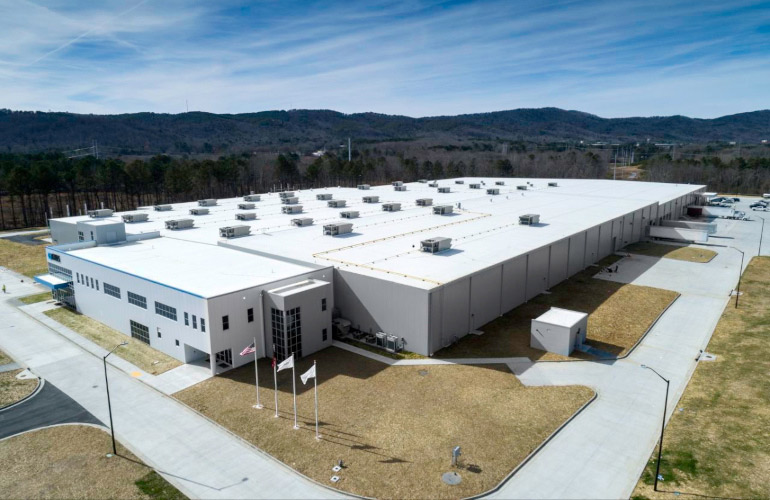
Solar panel manufacturer Q-cells revealed on Friday that it will lay off one-third of its workers at two factories in Georgia. 1000 employees will temporarily have their salaries reduced and working hours shortened due to the increased detention of solar cells and other upstream panel components by the US Customs and Border Protection (CBP). Q-cells will also lay off 300 workers employed by two factories through talent agencies. The federal government has strengthened the enforcement of the Uyghur Forced Labor Prevention Act (UFLPA), which restricts the entry of Chinese goods manufactured using forced labor into the United States. CBP began to detain silicon solar cells manufactured by South Korean company Qcells this summer. Qcells has repeatedly stated that its products do not use Chinese components. The company has long used OCI's polysilicon from South Korea and components from Southeast Asia for manufacturing. Qcells stated that their goods are currently passing through customs, but they will need to temporarily reduce their working hours during this period. Although Qcells is one of the earliest manufacturers in China to start building new solar cell and wafer manufacturing facilities, the company currently only assembles modules in the United States and still requires a stable supply of solar cells to complete module assembly. Similar CBP detention has already affected Maxeon, a solar panel manufacturer partially funded by China but without any documentation linking it to forced labor in China. Despite Maxeon providing thousands of pages of documentation proving its full compliance with UFLPA, its solar panels assembled in Mexico have been banned from entering the United States since the summer of 2024. Maxeon has filed a lawsuit with the US International Trade Court and is awaiting updates during the government shutdown. For Maxeon, this is a company that was once globalized and now only focuses on the US market. Maxeon has sold its sales channels and entities in Europe, Asia, and Latin America, while retaining its assembly plant in Mexico and planning to build a 2-gigawatt solar panel factory in New Mexico. Due to the inability of most products to enter the country, Maxeon's financial situation has significantly declined. The company reported that its revenue for the first half of 2025 was $390 million, compared to $371 million for the same period in 2024. The plan for the American factory has been suspended. Marta Stoepker, Senior Director of Communications at Qcells, stated in a statement to local news that the company had to halt production "because our goods were delayed during customs clearance in the United States Qcells is expected to resume full production in the coming weeks and months. Our commitment to establishing a complete solar energy supply chain in the United States remains unchanged, "she continued. Our Georgia team will soon return to full capacity to bring American made energy to communities across the country
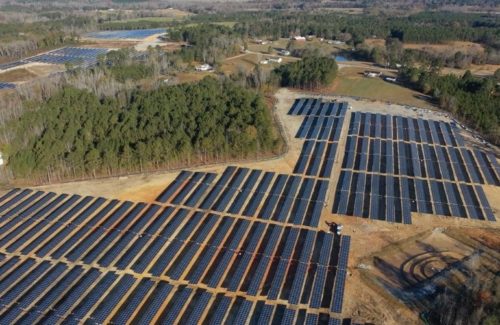
National solar developer Pine Gate Renewables is filing for Chapter 11 bankruptcy and selling its portfolio of solar and energy storage projects as well as its independent power producer business. This will include ongoing and developing projects, with the company stating it has 10 gigawatts of direct current. According to the press release announcing the bankruptcy of the company and the sale of assets, Pine Gate plans to continue its operations through this transaction. In September, Blue Ridge Power, the engineering, procurement, and construction subsidiary of Pine Gate Renewables, submitted a state warning notice to lay off over 500 employees on November 18th. ACT Power Services, the operations and maintenance subsidiary of Pine Gate, has not filed for bankruptcy, but the company is in discussions to sell the business. To ensure that our project continues to generate renewable energy, we have made a strategic decision to initiate this court supervised sales process, "said Ben Catt, CEO of Pine Gate. He continued, 'I am grateful for the hard work and dedication of our Pine Gate team, who have been helping us drive the transition to renewable energy.'. As we go through this process, we remain committed to supporting the valuable project partners of over 100 solar facilities we operate, and continue to advance the projects we are developing and constructing. ” Pine Gate was founded in 2016 and serves the commercial and utility solar markets in 32 states. The company last appeared on the list of top solar contractors for 2023 and installed nearly 500 megawatts of solar energy in 2022. Pine Gate plans to complete bankruptcy related transactions within 45 days after yesterday's announcement.
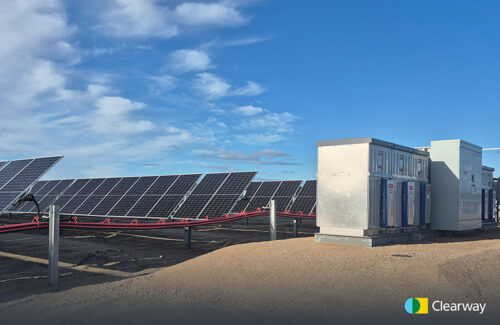
Clearway Energy Group announced that its Rosamond South 1 project located in Kane County, California has entered commercial operation. The 117 megawatt energy storage and 140 megawatt solar complex will generate enough electricity annually to supply over 72000 households and deploy low-cost energy during peak demand periods. We are pleased to put Rosamond South into operation and continue to provide reliable, low-cost energy to Kern County and the wider region, "said Valerie Wooley, Senior Origin Vice President at Clearway. Thank you to our esteemed customers for partnering with Clearway to help achieve your clean energy goals and bring more reliable energy to California. ” Rosamund South 1 (also known as Golden Fields Solar IV LLC) has signed long-term contracts with multiple California power service entities, including MCE, University of California, Rancho Cucamonga Municipal Power, Eastern District Power Authority, Moreno Valley City, and Constellation Energy. This is MCE's second large-scale solar plus energy storage project, marking another important step towards accelerating the state of California towards 100% renewable energy within 15 years, "said Dawn Weisz, CEO of MCE. This project enhances the reliability of our renewable energy supply by providing electricity when people need clean energy the most. At the same time, it reduces emissions, improves air quality, and creates green employment opportunities for sustainable households. For everyone, this is a win-win situation More than 400 union workers participated in the construction. McCarthy Construction Company, along with labor partners including the 220 Labor Union, Southwest Carpenter Regional Committee, Operations Engineer 12 Local Union, IBEW 428 Local Union, Blacksmith 416, and 433 Local Union, jointly led this construction.
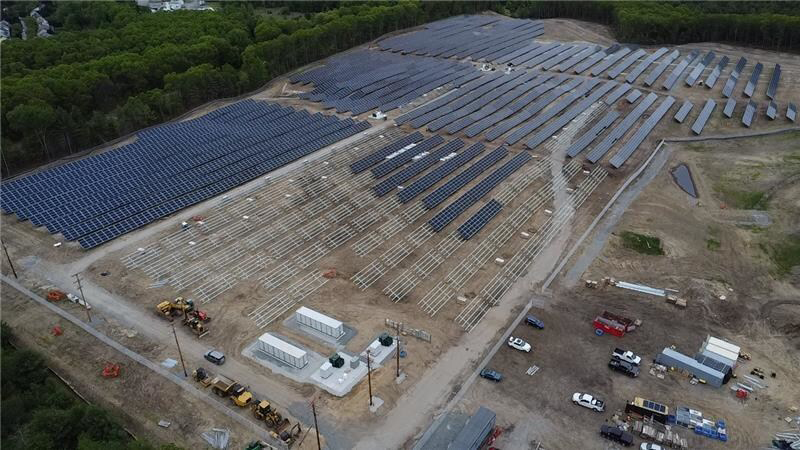
Distributed Energy Infrastructure (DEI) has completed a 7.1 MW solar+4 MW battery storage project on a Superfund website in Acton, Massachusetts, which was previously occupied by a chemical manufacturing facility. DEI collaborates with Terrasmart to safely construct the system on contaminated sites. Excavation work should be minimized as much as possible, and electrical infrastructure should be mainly designed on the ground to avoid interference and soil pollution. The system is designed around existing structures (including old concrete slabs) to reduce site damage. Projects like Acton demonstrate how to responsibly bring clean energy to communities while addressing the challenges of historically polluted land development, "said Sean Harrington, President and CEO of Distributed Energy Infrastructure. By transforming brownfield into productive solar and energy storage sites, we are expanding access to renewable energy, strengthening local power grids, and revitalizing otherwise unusable land As a brownfield project located on previously unusable land, the Acton project has brought significant community and environmental benefits. It repurposed a contaminated Superfund website for productive purposes, preserving farmland and open spaces, and created nearly 40 local job opportunities during construction. This project combines community solar models with battery energy storage to provide clean energy and enhance the resilience of the local power grid. In addition, the project has expanded the town's tax base through increased revenue and supported Massachusetts' SMART and clean peak standard goals, as it reduces pressure on the power grid during seasonal demand peaks. Brownfield transformation is a powerful means of expanding clean energy access while addressing industrial pollution legacy issues, "said Graeme Dutkowski of Syncarpha Capital, the project developer. This project demonstrates how DEI's safety first and thoughtful approach to constructing brownfield solar projects can transform an underutilized site into a reliable source of electricity and local economic value
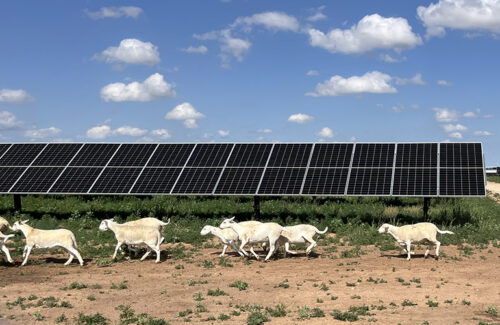
A review conducted by SUN DAY campaign on data just released by the Federal Energy Regulatory Commission (FERC) reveals that the combination of solar and wind energy accounted for 88% of the newly added U.S. electric generating capacity in the first eight months of 2025. In August alone, solar energy provided two-thirds of the newly added capacity, marking the second consecutive year in which solar energy has maintained a monthly lead among all energy sources. Both solar and wind energy added more capacity than natural gas. Within three years, the combination of all renewable energy sources may exceed 40% of installed capacity. Solar energy accounted for two-thirds of the newly installed power generation capacity in August, and 73% so far this year. In the latest monthly Energy Infrastructure Update report (data as of August 31, 2025), the Federal Energy Regulatory Commission (FERC) stated that a total of 48 solar "units" with a total capacity of 2,702 megawatts (MW) were commissioned in August, accounting for two-thirds (66.4%) of the new generating capacity added during the month. This represents the second-largest data point for monthly solar capacity additions in 2025, second only to January, when 2,945 MW of new capacity was added. The latest facilities include the 517.3 MW Outpost Solar and Energy Storage Project in Webb County, Texas; the 280.0 MW Gibson Solar Project in Gibson County, Indiana; the 254.0 MW Richley Energy Farm in Lake County, Tennessee; the 204.0 MW Luna Valley Solar Project in Fresno County, California; and the 200.0 MW Flat Fork Solar Project in Monroe County, Arkansas. In the first eight months of 2025, the total installed capacity of 505 newly added large-scale solar facilities (i.e., >1 MW) reached 19,093 MW, accounting for 73.4% of all newly added power capacity. Solar energy has been the largest source of monthly new power generation capacity for two consecutive years: from September 2023 to August 2025. During this period, the total utility-scale solar capacity increased from 91.82 GW to 156.20 GW. No other energy source has added as much new power generation capacity. For example, wind energy added 11.16 GW, while the net increase in natural gas was only 4.36 GW. As of this month, renewable energy accounted for 88% of the newly added capacity. In the first eight months of 2025, the combination of solar and wind energy (plus 4 MW of hydropower and 3 MW of biomass energy) accounted for 88.0% of the newly added capacity, while natural gas accounted for only 11.9%. The remaining net new capacity came from petroleum (20 MW) and waste heat (17 MW). Solar and wind energy account for nearly a quarter of the utility-scale power generation capacity in the United States; all renewable energy sources combined account for more than a third. The share of large-scale solar power generation in the total installed capacity (11.62%) is now nearly on par with that of wind energy (11.82%). If the recent growth rate persists, the c...
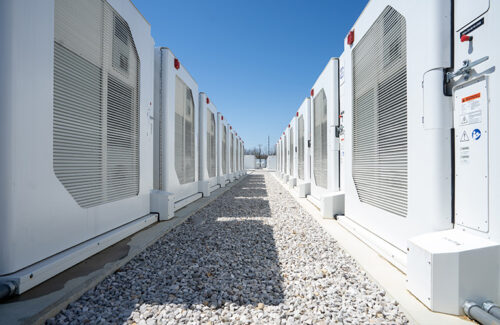
On October 29th, the Illinois House of Representatives passed a bill that will facilitate the construction of a 3 GW large-scale battery energy storage facility in the state, according to WAND. By incentivizing new energy storage construction and VPP programs, the Clean and Reliable Grid Affordability (CRGA) Act aims to help the unstable grid better cope with the surge in demand brought about by new data centers and increased electrification. The bill will also require utility companies to establish peak and off-peak electricity pricing policies, encouraging homeowners to reduce their demand on the power grid during peak hours by utilizing solar energy combined with energy storage technology, according to the Illinois State Senate News. "We applaud the Illinois House of Representatives for passing the Clean Reliable Grid Affordable Act and look forward to the Senate discussing the bill before the veto session concludes," the Illinois Solar Energy Association stated in a press release. "This vote demonstrates that Illinois recognizes the importance of embracing solar energy, energy storage, and virtual power plants. Not only will the CRGA reduce energy costs in Illinois, but it will also ensure that Illinois' clean energy industry is protected from the recently passed federal policies that are threatening millions of jobs and billions of dollars in economic activity nationwide."
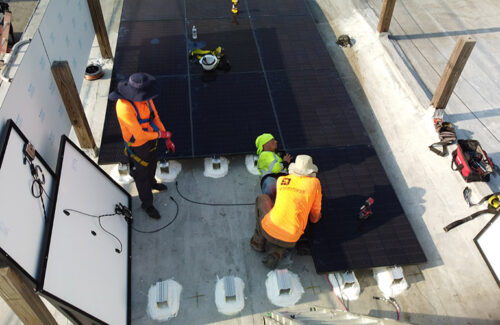
On October 24th, the youth empowerment organization YEAH Philly, in collaboration with RE-volv, Good Energy Collaborative (GEC), and GreenBrilliance, hosted a community celebration to mark the completion of its new 12-kilowatt solar array, which will fully meet YEAH Philly's electricity needs. Thank you to Billie Eilish and her fans. Through Eilish's Changemaker Program, RE-volv received a grant through REVERB to assist YEAH Philly in installing solar energy and achieving these savings. "Solar energy is the future of non-profit organizations," said Kendra Van De Water, co-executive director of YEAH Philly. "Not only because of cost savings, but also because it's a way for us to invest in our community." Since its establishment in 2018, YEAH Philly (Youth Empowerment for Advancement Hangout), a community-based organization led by black individuals, has provided sustainable job opportunities or paid internships for 227 young people, offered court advocacy to 175 young people, and provided free groceries to over 17,000 community members. The celebration included food, live music, an exhibition of resources from local non-profit organizations, speeches, and a ribbon-cutting ceremony. Billie Eilish was honored as a project supporter at the event, through her Changemaker initiative. RE-volv, a national nonprofit organization that develops and delivers solar energy projects for community service, received funding from the Changemaker Fund, which helped facilitate the solar installation at YEAH Philly. The Hammond Climate Solutions Foundation's Solar Moonshot program also provided financial support for the project. The solar energy project at YEAH Philly was led by members of the RE-volv Solar Ambassador program and GEC students from Swarthmore College. The RE-volv Solar Ambassador program is a clean energy leadership training initiative for college students seeking careers in clean energy. "We have all the solutions to address the climate crisis and provide affordable, reliable, and clean energy to communities, but not everyone knows this," said Andreas Karelas, Executive Director of RE-volv. "When cultural icons like Billie Eilish use their platform to support solar energy projects like YEAH Philly and raise awareness about solutions, it is one of the most important things anyone can do.". ” Yes, the solar energy project in Philadelphia is part of an ongoing collaboration with the Good Energy Collaborative (GEC), focusing on cultivating youth and community leadership. Together, they offer hands-on workshops on solar energy, green jobs, and urban agriculture, allowing young people in West Philly to see themselves reflected in the clean energy movement. "These are precisely the types of collaborations we need to create sustainable solutions for communities most severely impacted by climate change," said Giovanna Di Chiro, Director of the Good Energy Collaborative and Professor of Environmental Studies at Swarthmore College. "Engaging young people in prac...
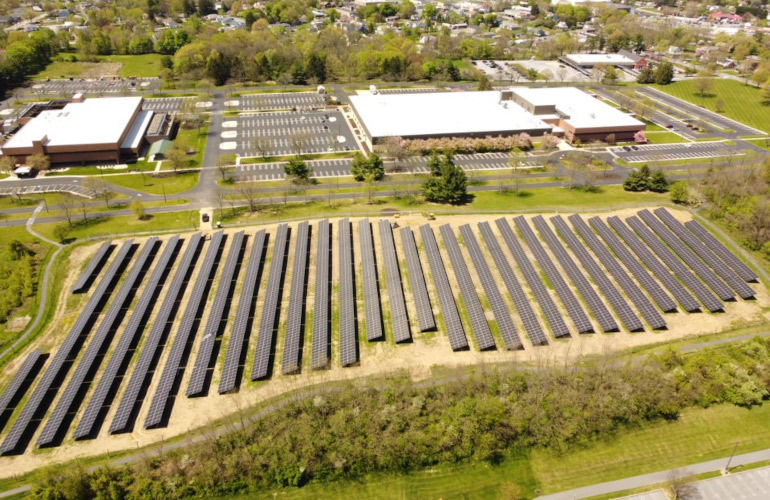
The Coral Reef Partnership recently completed a 1.94 MW ground-mounted solar system within the pedestrian pathway of D&H Distributing's corporate headquarters. The project, located in Harrisburg, Pennsylvania, utilizes brackets from DCE Solar. "D&H has always been committed to investing in environmentally friendly and sustainable business practices," said Michael Schwab, Co-President of D&H. "We have adopted energy-saving solutions and methods in our corporate offices and distribution centers, and actively seek out available green certification technologies. Now, with the launch of our new solar park, we further demonstrate our commitment to clean energy, sustainability, and innovation." "This solar park is one of the larger community systems in the region, designed to directly provide clean, renewable energy to D&H facilities," said William Hines, project manager of Coral Reef Partners. "The system covers approximately five acres and includes 3,888 modules, with the ability to offset a significant portion of the company's energy use. The successful completion of the project reflects the team's resilience and the increasingly important role of solar energy in supporting regional energy independence."
Categories
New Products
Tin Roof Rapid Solar Mounting System with Hanger Bolt Read More
Residential Small Solar Easy Bracket Kit for Home Balcony Read More
Automatic Single Pile Solar Tracker with 10 PV Panels Read More
Angle Adjustable Aluminum Easy Solar Panel Bracket for Garden Read More
Intelligent Single Post Dual Row Solar Tracking System Read More
5000ES Solar Off-Grid Energy Storage Inverter Supplier Read More
Multi Drive Double-Sided Single Axis Tracker System Read More
© Copyright: 2025 Xiamen Wintop New Energy Tech Co., Ltd.. All Rights Reserved.

IPv6 network supported
Friendly Links:
Integrated Solar System